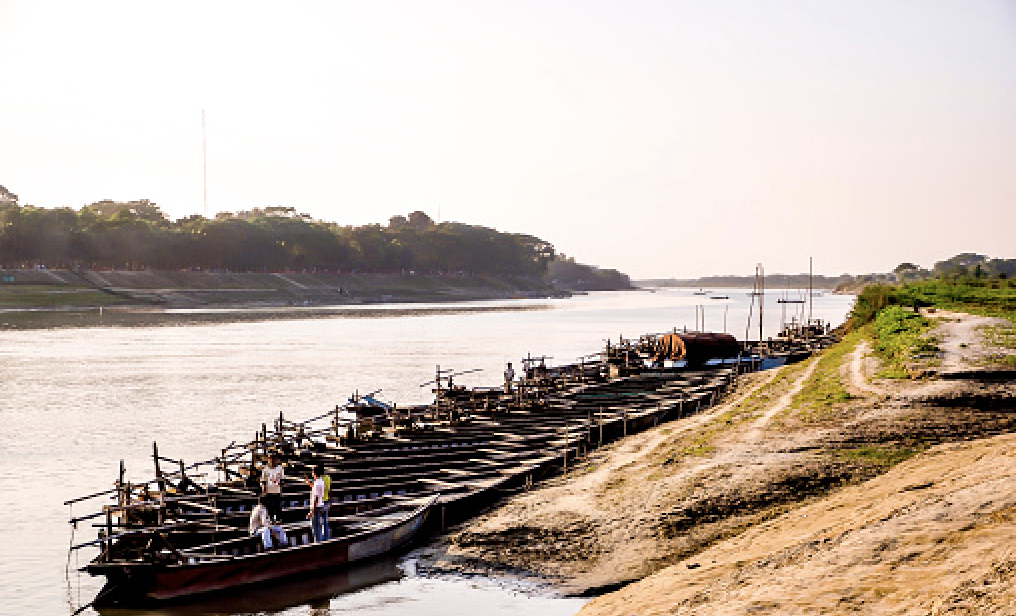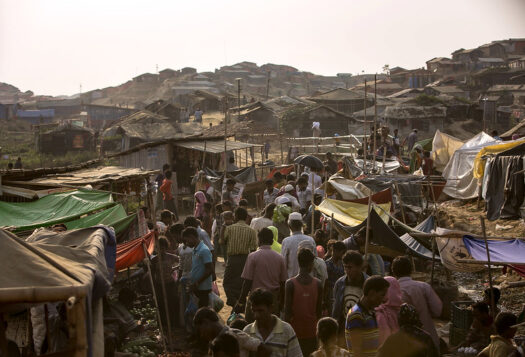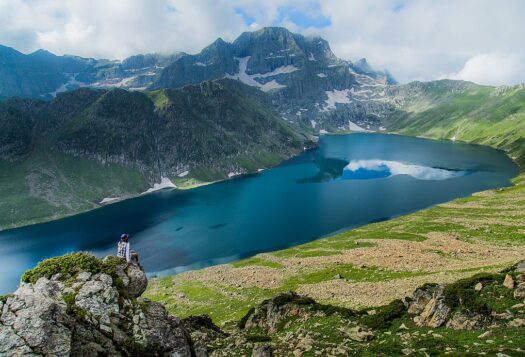
In 2016, Ashfaqul Chowdhury examined China, India, and Bangladesh’s disparate priorities with respect to the Brahmaputra River, which has generated mutual distrust among them and complicated cooperation efforts. His words, republished below, remain a timely assessment of how access to and management of shared natural resources such as water can complicate the path to stability on the subcontinent.
The Brahmaputra River is an enormous transnational river spanning more than 2,900 kilometers across China, India, and Bangladesh. While not as famous as the Ganges or the Mekong, management of the Brahmaputra has important implications for water, food, and energy security in the region. However, this is complex because China, India, and Bangladesh all have different priorities with respect to the river. China primarily wants to extract hydroenergy, whereas India deeply values its water supply and storage capacity. Bangladesh, the most downstream of the three countries, could use the Brahmaputra’s waters to manage the increasing salinity in its rivers because of climate change. Unsurprisingly, these goals sometimes conflict with each other. Mutual distrust among all three governments further complicates cooperation.
Water Dilemmas
China’s location, upstream from both India and Bangladesh, gives it an advantage in terms of controlling the management of the Brahmaputra’s flows. Importantly, China intends to exploit the hydroelectric potential of the Brahmaputra to supply electricity to Tibet, a region economically and politically marginalized from the rest of China. Although Chinese policy documents reveal a plan of building four hydroelectric dams on the river, only the Zangmu Dam is operational so far.
Although Chinese officials have repeatedly assured India that Beijing does not have any intention of diverting water from the Brahmaputra, continuing border tensions and China’s aggression in other parts of the Asia-Pacific have given India cause for concern.
Indian objections highlight some important concerns about potential Chinese ambitions to build additional dams. Some Indian policy analysts believe that China could use future hydroelectric dams to threaten part of India’s water supply during dry seasons or during a future Sino-Indian conflict. There is also concern that China could in the long run divert water from the Brahmaputra to the Yellow River through the Sichuan Province. Although Chinese officials have repeatedly assured India that Beijing does not have any intention of diverting water from the Brahmaputra, continuing border tensions and China’s aggression in other parts of the Asia-Pacific have given India cause for concern.
Interestingly, China has its own share of concerns. China fears that India could use its activity on the Brahmaputra to solidify its hold over Arunachal Pradesh, an area that India administers but China stakes claim to. In recent years, India has increased its development activities in Arunachal Pradesh, and plans to build large dams in the region for energy production. Seeking control of Arunachal Pradesh, China is concerned that Indian development there will strengthen New Delhi’s presence in the area. While China cannot force India to stop building dams in its sovereign territory, this could create potential for Chinese retaliation upstream, in the form of diverting water flow or withholding water level data. Either of these moves could have disastrous consequences. For example, it is alleged that if China would have shared hydrological data with India ahead of major flooding in June 2000, India could have taken more action to limit damages from the floods that ultimately killed at least 40.
The Teesta Dispute
As far as India and Bangladesh are concerned, the more prominent dispute centers on managing the Teesta River, which is a tributary of the Brahmaputra. The Teesta flood plain covers 14 percent of the total cropped area in Bangladesh and an estimated 7.3 percent of the population directly derive their livelihoods from the river. Reductions in water available from the Teesta River have challenged farmers and others in Bangladesh who rely upon the river’s flows for their livelihood. India’s management of the river has contributed to this reduction in the water supply, as it regularly diverts water from the Teesta for agricultural reasons during the dry season (particularly since building the Gazaldoba dam in the 1980s). In part because of India’s interference in the Teesta’s flow, in 2015, Bangladesh received only around 300 cusecs of water in the dry season while the flow was at least 5500 cusecs before.
As the two lower riparian countries, India and Bangladesh have an interest in resolving their river disputes in order to approach China with a common negotiating position.
India’s central government has tried to resolve the management of the Teesta with Bangladesh in an equitable and reasonable manner, in accordance with the United Nations Watercourses Convention. In fact, in 2011, former Indian Prime Minister Manmohan Singh and Bangladeshi Prime Minister Sheikh Hasina were on the verge of an agreement to share the water flow of the Teesta equally. However, this agreement never came to be because Mamta Banerjee, the state-level chief minister of West Bengal, refused to agree to the deal. She feared that such a deal would negatively impact the northern part of West Bengal, especially during the dry season. Her rejection of the deal was enough to derail the process because states, rather than the central government, dominate the water regulation process in India. Dhaka, in return, denied ratifying a transit agreement with India, which would have given India land route access to its northeastern states through Bangladesh. This was a significant loss for New Delhi because transit access would have facilitated the Indian government’s pledge to end decades of underdevelopment of these states that are isolated from mainland India. In 2015, Bangladesh ultimately granted transit access for food grains and power equipment in a quid pro quo for India’s ratification of a land boundary agreement originally negotiated in 1974, suggesting that resolving the Teesta dispute may require similar diplomatic give and take.
The Way Forward
Clearly, river management issues between China and India and, in turn, India and Bangladesh remain contentious. National security implications inhibit compromise between China and India while state-level politics in India undermine cooperation between India and Bangladesh. However, there are some small encouraging signs as well. China now provides water level and rainfall data to both India and Bangladesh, which helps those countries to anticipate floods earlier. However, the dominance of China’s negotiating position because of its upper riparian position continues to have disturbing implications. Importantly, China mostly deals with issues bilaterally, rather than multilaterally, which gives it more flexibility to shape the negotiations in its interests and to divide India and Bangladesh. As the two lower riparian countries, India and Bangladesh have an interest in resolving their river disputes in order to approach China with a common negotiating position. Bangladesh and India ought to jointly invite China to the negotiating table and seek long-term agreements regarding data sharing and permissible levels of water flow diversion. Bangladesh and India should not delay aiming toward these goals because China currently views diverting the Brahmaputra as cost inefficient; this could easily change in the future. Thus, India and Bangladesh have an interest to reach an agreement with China that might regulate its behavior before a potential water crisis or future energy demand convinces Beijing that diverting the Brahmaputra further is in its best interests.
***
Image 1: Photography by mahosha via Getty Images
Image 2: Munir Uz Zaman-AFP via Getty Images



